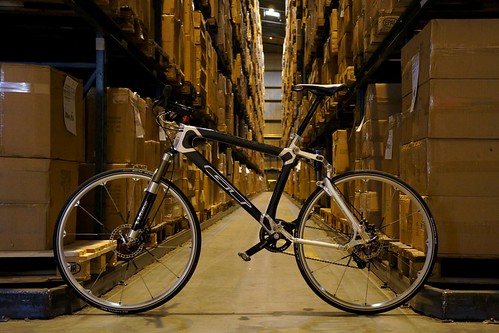Affichage des articles dont le libellé est GT. Afficher tous les articles
Affichage des articles dont le libellé est GT. Afficher tous les articles
octobre 23, 2013
juillet 04, 2013
A Brief History #6 | TURNER bicycles
Turner Bicycles founder David Turner ( no family links with Paul Turner and Gary Turner) has been at the forefront of MTB suspension since the technology's inception in the 1980's. As a professional racer,
 David helped designers at Rock Shox, Mongoose and AMP Research race-test and fine-tune early advancements in suspension design. After retiring from full-time competition, David worked with legendary design guru Horst Leitner to create some of the most progressive and lightweight suspension bicycle frames and forks the sport had ever seen.
David helped designers at Rock Shox, Mongoose and AMP Research race-test and fine-tune early advancements in suspension design. After retiring from full-time competition, David worked with legendary design guru Horst Leitner to create some of the most progressive and lightweight suspension bicycle frames and forks the sport had ever seen.
Knowing how a full-suspension mountain bike should ride, David looked to the Industry and could not find any viable solution and as a result the vision of Turner Suspension Bicycles was born. Driven only by a meager budget and his own determination, Turner Bikes began to take shape. In late 1991 early prototypes found their way under top pros and into magazine spy shots (see photo to the right) but David's first priority was to change people's expectations of how a bike should ride rather than just to meet it. The company's focus had a tenacious grip on the design of the bike and not the image, "Form follows Function" was the unspoken creed.
 |
| 2008 Turner Highline |
 experienced. Numerous NORBA, World Cup and UCI Championships have been won on Turner frames, relabeled by other bike companies to be ridden by their professional riders. Turner Bikes became a dominate force in the shadows of the industry for years to come.
experienced. Numerous NORBA, World Cup and UCI Championships have been won on Turner frames, relabeled by other bike companies to be ridden by their professional riders. Turner Bikes became a dominate force in the shadows of the industry for years to come.
In ‘94, after the introduction of the 1st batch of 150 original production V-1 ‘95 Burners (Version 1) were made by Ventana Mountain Bikes in Rancho Cordova, California. Many were raced by the top pros of the day yet you would be hard pressed to find a Turner logo on those bikes since most of those riders sponsored by other bike companies.
Ventana could no longer keep up with the demand for Burners so fabrication then moved into the Tempe, Arizona shop of FTW (Frank the Welder) for 1995 models. This factory warranted mods were done to fix cracks that developed on frames that were being raced in d/h events. Of course, these repaired frames were completely refinished and so began the now famous Turner customer service.
David Turner was there, working with Horst Lietner of AMP Research when the Horst Link (HL) was 1st drawn up in ‘90 and continued to use it on all his 4 Bar frames even after the rights were sold to Specialized who then licensed it to all takers in 2000. A few years later, he licensed ICT (Instant Center Tracking) from Ellsworth Bicycles in order to (in short) continue to use the HL and a flat profile rocker.
In 2006, Turner dropped the much touted HL that was used from the very beginning for TNT due to a growingly difficult licensing agreement and the discovery of a way to design around it without any loss of performance, as agreed upon by most riders who have tested both back-to-back. Some will even say there was an improvement that a pivot point between the swing arm and axle has been relocated to the shockstay. The move to TNT negated the ICT patents and freed Turner to return to doing things their own way on their own terms.
février 01, 2013
MTB rear suspensions | explanations
Perhaps because front suspension has been easier to implement and more readily adopted, it is often assumed that a bicycle with rear suspension has full suspension. Mountain bike technology has made great advances since first appearing in the early 1990s.
Early full suspension frames were heavy and tended to bounce up and down while a rider pedaled. This movement was called pedal bob, kickback, or monkey motion and took power out of a rider's pedal stroke — especially during climbs up steep hills. Input from hard braking efforts (known as brake jack) also negatively affected early full suspension designs. When a rider hit the brakes, these early suspensions compressed into their travel and lost some of their ability to absorb bumps. This happened in situations where the rear suspension was needed most.(...)
août 07, 2012
avril 07, 2011
A brief history #1 | GT STS and LTS
GT est un fabricant américain de vélos créé en 1979 par Gary Turner, un ingénieur spécialiste de la soudure et Richard Long, propriétaire d'un magasin de cycles. La compagnie fusionna avec Schwinn en 1998 mais l'ensemble GT-SCHWINN déposa la bilan fin 2001. Depuis lors, la marque a été relancée par le groupe Dorel Industrie en 2004. (…)
GT Bicycles is a large American manufacturer of road mountain, and bmx bicycles. The company was founded in 1979 by Gary Turner, a welding engineer and Richard Long, a bike shop owner. The company merged with Schwinn (Questor Partners) in 1998, but the conglomerate went bankrupt in 2001, and was acquired by Pacific Cycle. Dorel Industries acquired Pacific Cycle in 2004. GT has then been resurrected.(…)
Inscription à :
Articles (Atom)






